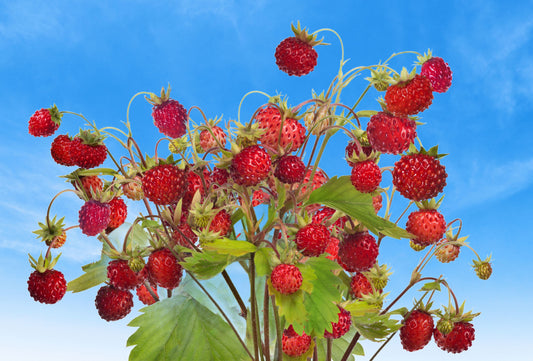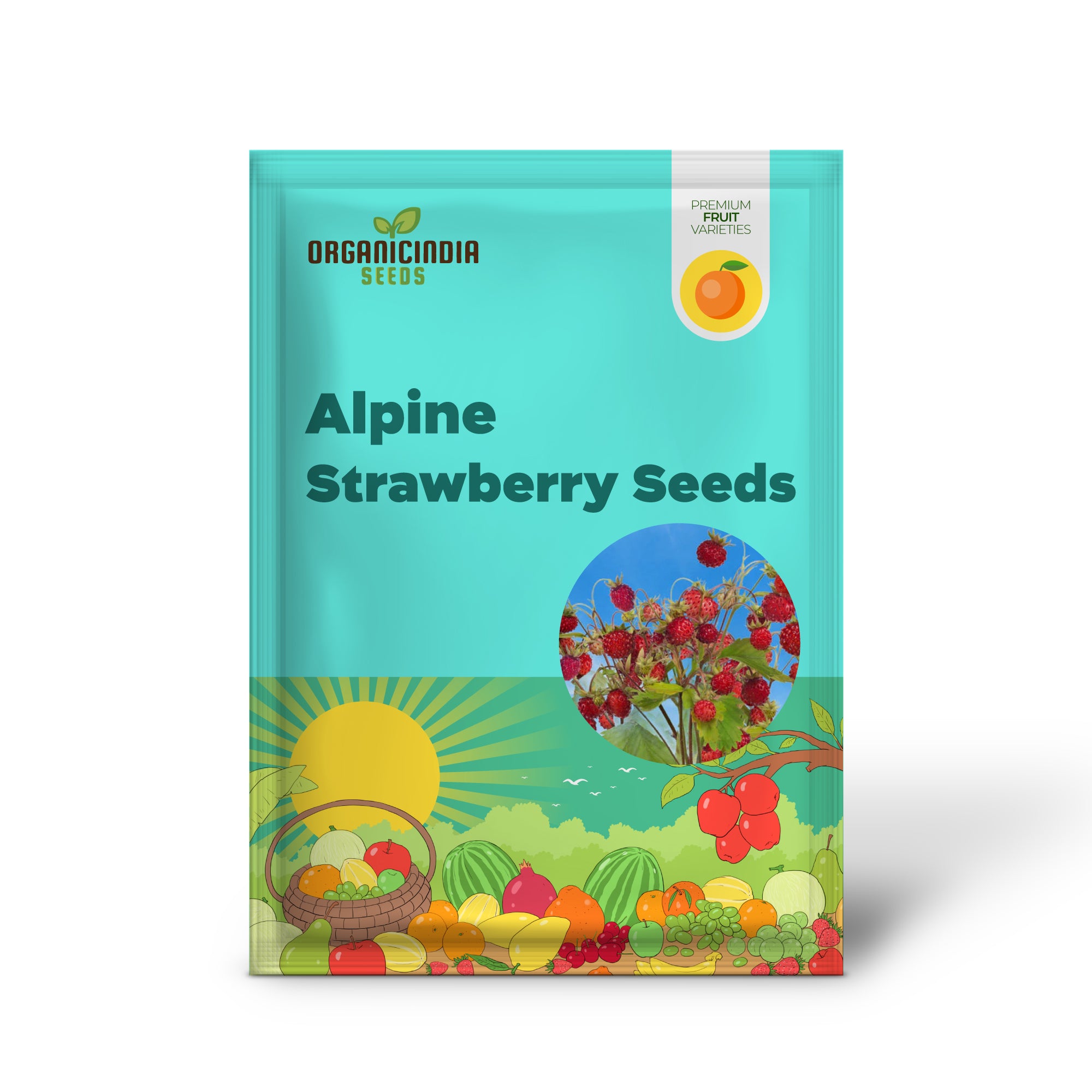



Free Shipping
Safe & Secure Payments
Alpine Strawberries (Fragaria vesca) are a delightful variety of strawberry known for their small, sweet fruit and delicate white flowers. Unlike traditional strawberries, these ever-bearing plants produce fruit throughout the growing season, with a rich, aromatic flavor that is often described as more intense and flavorful than larger strawberries. The plants are perfect for gardeners who want a low-maintenance, high-reward fruiting plant that can thrive in small spaces, containers, or even as ground cover. With their charming white flowers in spring, lush green leaves, and delicious, fragrant red fruit, Alpine Strawberries are an ideal choice for edible landscaping, small gardens, or anyone looking to grow their own sweet, fresh fruit.
Key Features:
Growing Information:
Light:
Alpine Strawberries prefer full sun but can tolerate partial shade. For the best fruit production and flavor, plant them in a location where they receive at least 6 hours of direct sunlight per day.
Soil:
These strawberries thrive in well-draining, fertile soil that is rich in organic matter. They prefer slightly acidic to neutral soil with a pH between 5.5 and 7.0. If the soil is heavy or clay-based, amend it with compost or well-rotted manure to improve drainage and fertility.
Planting Tips:
Start Alpine Strawberry seeds indoors in early spring by sowing them on the surface of a moist, well-draining seed-starting mix. Do not cover the seeds, as they require light to germinate. Keep the soil consistently moist and maintain a temperature of 65-70°F (18-21°C) for optimal germination. Germination typically occurs in 2-4 weeks. Once the seedlings are large enough to handle and all danger of frost has passed, transplant them outdoors into well-prepared soil. Space plants about 6-8 inches apart to allow for their spreading growth habit. Alpine Strawberries can also be grown in containers or hanging baskets for easy harvesting.
Watering:
Alpine Strawberries require consistent moisture, particularly during dry spells, but should not be waterlogged. Water deeply and regularly to keep the soil moist, especially when the plants are fruiting. Mulch around the base of the plants to help retain moisture and suppress weeds.
Benefits:
Growing Zones:
Alpine Strawberries are hardy in USDA Zones 3-8. They are suitable for a wide range of climates, from cooler northern regions to milder southern areas. They are particularly well-suited to areas with cool summers and mild winters.
How to Use in the Garden:
Conclusion:
Alpine Strawberries (Fragaria vesca) are a must-have for any fruit lover or gardener looking to grow delicious, sweet fruit with minimal effort. Their ever-bearing nature, compact size, and attractive white flowers make them a fantastic addition to any garden or container. Whether you're looking to enjoy fresh strawberries throughout the season, add ornamental value to your garden, or create a pollinator-friendly environment, Alpine Strawberries offer year-round rewards. With their ease of care, delightful flavor, and ability to thrive in small spaces, they are a perfect choice for both beginners and experienced gardeners alike.
Choose options

